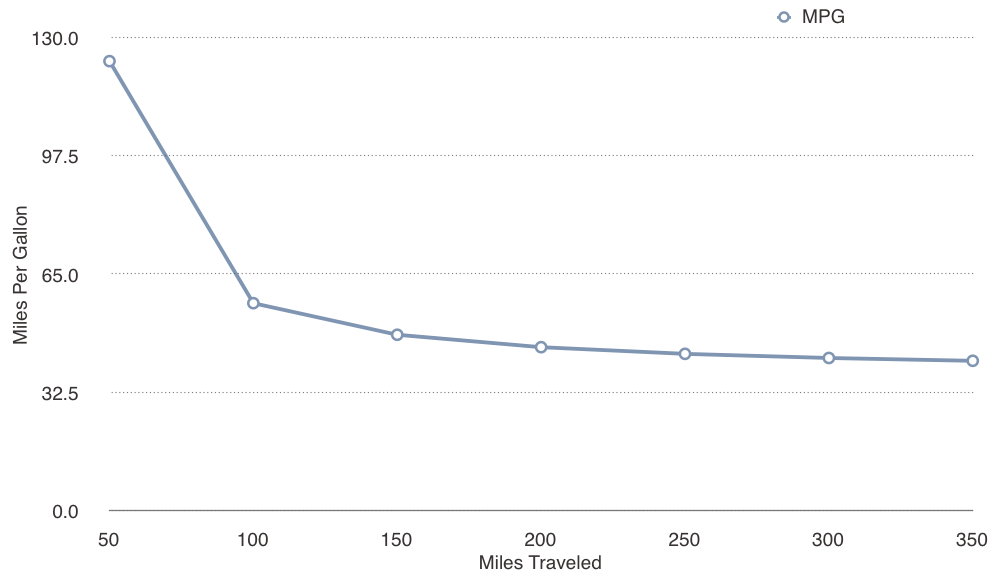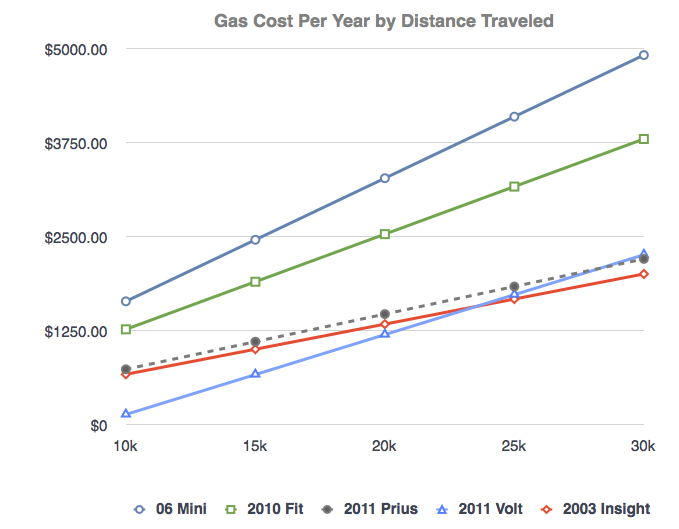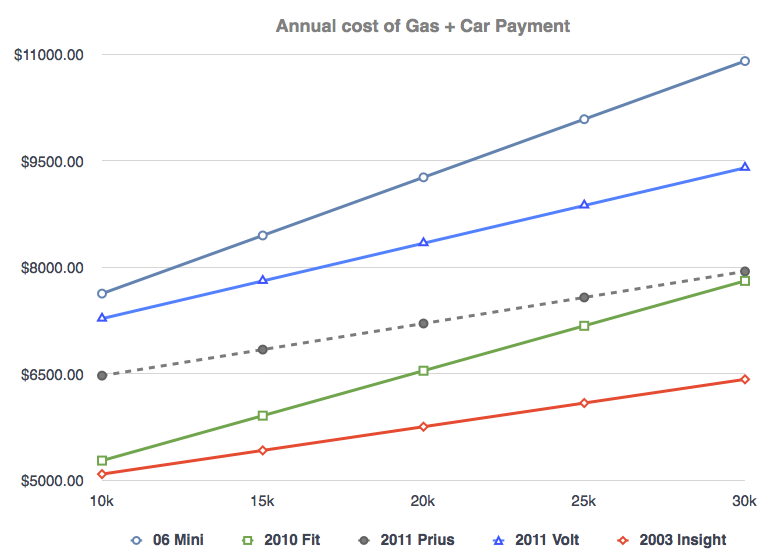The Chevy Volt has a problem.
Confusion.
This past February I had the good fortune to attend the Chicago Auto Show with the inimitable Ted E. Dunphy. We go to the auto show every year or two, but this year I was particularly interested in seeing and having the opportunity to ride in the Chevy Volt. The ride was fun - around a short track inside McCormick Place, the cars running entirely on electricity.
What was more interesting - and perplexing - was trying to figure out what kind of mileage I would get with the car. Usually this is a relatively straight-forward thing, published clearly on the window sticker of each new car. But if the Volt were treated the same way, it's sticker would just say "it depends".
There were multiple information stations geared towards helping the show-goer understand what kind of mileage one will get in Chevy's series hybrid - er - "extended range electric" car. Most consumers understand the conventional Miles-Per-Gallon rating of a traditional or parallel hybrid car (such as the Prius). With a traditional electric car, with the extended charging time, the relevant number is the range - how far it will go on a single charge.
The Volt, of course, has an electric motor but keeps going after it runs out of juice, using its gasoline engine. This is what makes the answer to the MPG question "it depends". Specifically, it depends upon how far you go after your original charge runs out each day. The first 35 miles (give or take) are all electric, after which the car gets 37 MPG according to fueleconomy.gov.

Hence the information stations.
But while those stations made it clear that the further one drives, the lower the mileage, this left the matter of determining whether the car was of value to a given consumer a glaringly complex question. It may be the case, however, that one way to look at this is to consider it against your actual usage, and to pull that initial 35 miles out of the calculation.
To give that a go I selected five separate cars - four that would be of interest to anyone for whom mileage is a primary selection criterion - and one that is of interest to me personally since I own it: The Volt, the Honda Fit, the Toyota Prius, the original (two seater) Honda Insight, and the 2006 Mini Cooper S (that one's mine). I included the Mini in part because I wanted to see how it compared to the others.
To start with, I used data from fueleconomy.gov and calculated the annual fuel costs based upon an average fuel price of $3.67/gallon for regular, and $3.93/gallon for premium (both the Mini and the Volt require premium fuel). I then calculated how much it would cost to operate each vehicle over a year starting at 10,000 miles per year increasing by 15,000 mile increments, removing the first 35 miles from each trip each day to account for it's electric-only operation. Those costs come out like this:

But gasoline is not the only cost of owning a car. Most people buying a car will borrow, and that cost will always be a relevant factor. If one compares the same cars, including the monthly car payment assuming a five year loan with no down payment for each new car, and the blue book value and a two year loan for the Honda Insight, and my current car payment for the Mini, one gets a considerably different picture:
Because of it's relatively high purchase price ($32,780 after government rebate), adding in the car payment ramps up the cost of Volt ownership considerably. It becomes the second most expensive car to own (second, sadly, to my Mini) and the two Honda's present as the far more economical options. What was especially interesting to me is the change the car payment consideration made in the position of the Honda Fit. Because it's an inexpensive car to purchase, with good mileage for a traditional (non-hybrid) vehicle, it's overall cost of ownership is really quite low in comparison. It's notable here that the Fit not only does better than Volt, but also better than the Prius, with that difference declining only as annual usage approaches 30k/year.
All in all, this suggests that, while it's a fascinating concept, choosing one is still not an economical decision.
